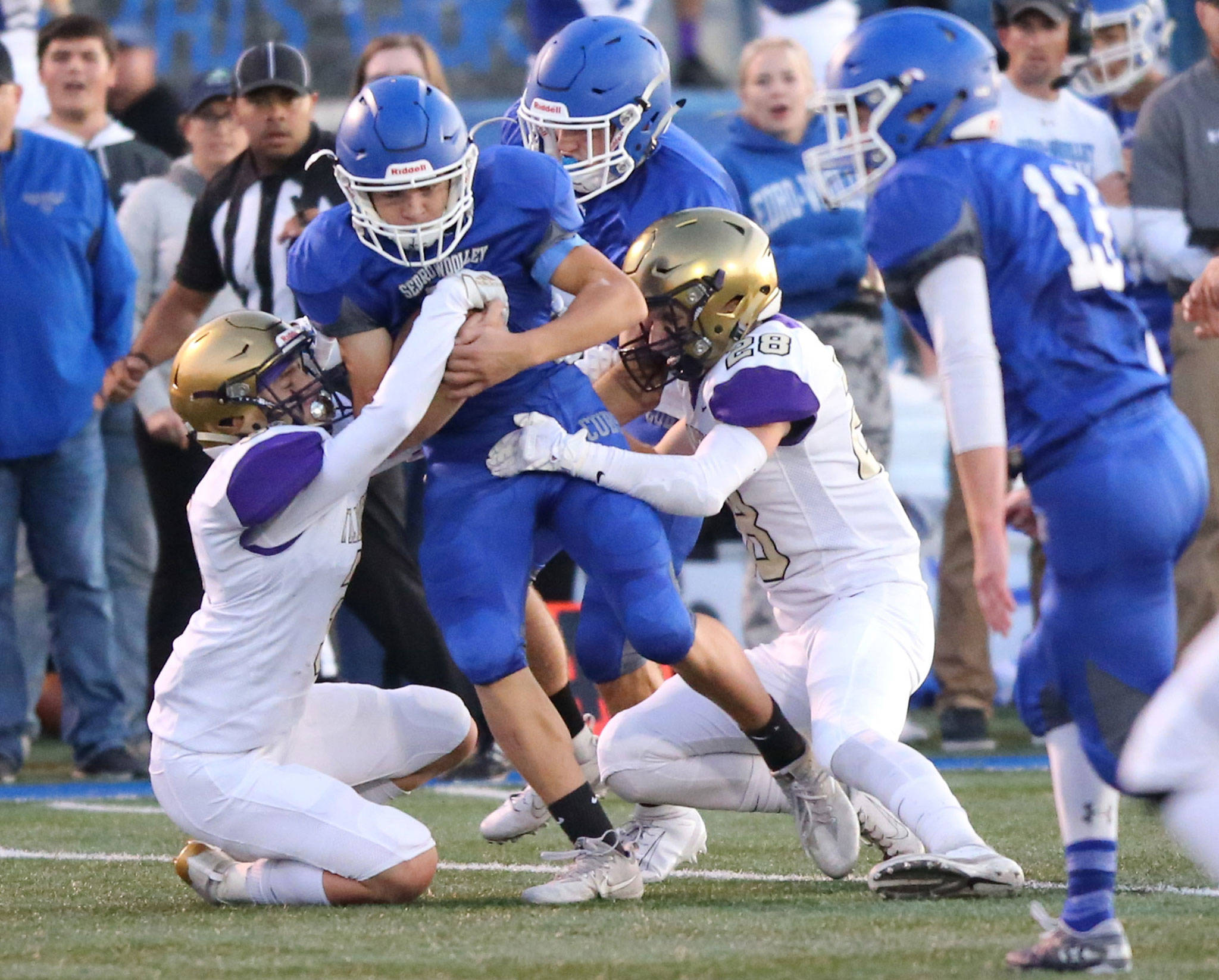Oak Harbor High School is considering a move from the Western Conference to the Northwest Conference, rejoining the league it left more than 40 years ago.
When Oak Harbor grew to a 3A school, it left the 2A Northwest League and joined the Western Conference in the fall of 1977. At that time, unlike today, leagues included teams of only one classification. That necessitated Oak Harbor’s shift to the nearest 3A league, Wesco.
Currently, the Northwest Conference includes 14 schools (3A Ferndale and Squalicum; 2A Anacortes, Bellingham, Blaine, Burlington-Edison, Lakewood, Lynden, Sedro-Woolley and Sehome; and 1A Lynden Christian, Meridian, Mount Baker and Nooksack Valley), while the Western Conference has 23 schools in the 2A, 3A and 4A classifications.
The move, according to Oak Harbor High School Athletic Director Jerrod Fleury, makes sense academically, financially and competitively.
Oak Harbor’s closest Western Conference foe is Stanwood, a 75-minute drive. Eight Northwest Conference schools are within 75 minutes of Oak Harbor and four are within 50 minutes.
With shorter trips, Fleury estimates that 70 percent less class time will be missed for an arrival time of 5 p.m. and 20 percent less for an arrival time of 3 p.m.
Coaches who are teachers would also be in class more often, a benefit for all students.
Fans, particularly parents, who cannot leave work early will be able to attend more away games.
In addition, the shorter trips mean student athletes, coaches and fans will return home earlier in the evening after away contests, eliminating, for example, getting back at 11 p.m. after a Tuesday night basketball game in Monroe.
Joining the Northwest Conference will cut travel costs about 23 percent, according to Fleury. An added financial benefit is not having to pay for substitute teachers when teacher-coaches must leave school early to attend away games.
With Northwest Conference schools closer to Oak Harbor than those from the Western Conference, home gates, theoretically, should improve as well, generating more money for the athletic department.
Nine of the 14 Northwest Conference teams are from one high-school towns, in contrast to only five out of 23 in the Western Conference.
By joining the Northwest Conference, Oak Harbor would be linking up with many like-minded communities where the school is an important social center.
The proximity of the Northwest Conference schools could help Oak Harbor form natural rivalries, something it does not have in the Western Conference.
The move would also allow Oak Harbor to align with its middle school, which already competes with Northwest Conference schools.
If Oak Harbor moves to the Northwest Conference, Mount Vernon is most likely moving as well, giving the NWC four 3A schools — Oak Harbor, Mount Vernon, Ferndale and Squalicum.
The biggest drawback to leaving Wesco, according to critics of the move, is the lack of consistent high-level competition that will prepare Oak Harbor teams for the postseason.
While the Northwest Conference is considered by many as the strongest 1A/2A league athletically in the state, facing only three other 3A schools during the regular season (Wesco has 12) could affect the strength of the Oak Harbor athletic program.
Other concerns are access to postseason play, the lack of sub-varsity teams at some of the smaller Northwest Conference schools, leaving the familiarity of Wesco opponents and abandoning the relationships and history developed over the past 40 years.
Both conferences want Oak Harbor, according to Fleury. The Northwest Conference voted 14-0 to accept Oak Harbor; the Western Conference is lobbying Oak Harbor to stay.
Fleury has met with Oak Harbor High School coaches, teachers and athletes as well as several community groups.
The feedback overwhelmingly suggests, he said, Oak Harbor should switch leagues.
A decision will be made by mid-January, Fleury said.



